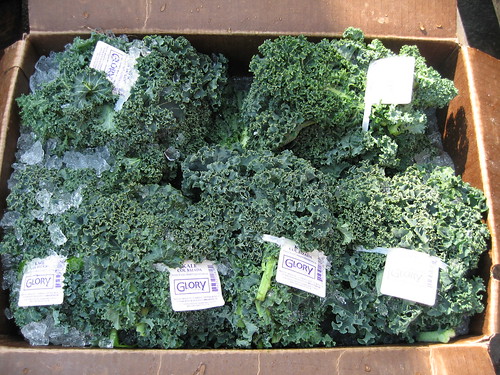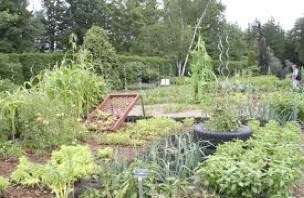July 25, 2013

A rudimentary study of the green leafy veggie.
You may be wondering why I’m writing a blog about kale. After all, what has kale to do with education and evaluation?
As someone living in Southern California, I’ve evolved into a “conscious” eater and learned to be aware of what I put inside my body. I have a small plot at a nearby community garden where I’ve planted basil, tomatoes, cucumbers, basil, arugula, chard, peppers, mint, lavender, and kale…lots of kale. I also support my local farmer’s market where I shop each Sunday and stock up on organic (non GMO) produce. But did I mention my love for kale? I really love kale, whether raw chopped up in a salad, used as a wrap, stir fried or baked in the oven for a bowl full of kale chips. So when a friend and colleague at a local community college (you know who you are) challenged me to write a blog about kale and education, I had no choice but accept. As a staunch supporter of the leafy green plant, I couldn’t shirk away and let kale down. Yet, how was I to tie kale into education or vice versa? I’m neither a nutritionist nor do I espouse to be an expert, but a challenge is a challenge.
Amazing things happen when we face challenges! No sooner had I started my research on kale and scratching my head on how to pair it with education that I came up with the brilliant idea of creating a new college major. In my make-believe college, students can earn the Associate of Arts (AA), drum roll please, in Kale Studies! Not bad, eh? Empowered by the knowledge gained and fortified by all the nutritional goodness of the plant, imagine the opportunities and endless possibilities awaiting the graduate with his/her freshly minted AA in Kale Studies diploma.
I, hereby, present to you, the core curriculum for a major in Kale Studies:
1. History of Kale (3.0 credits)
Kale has been cultivated for more than 2,000 years. It was popular in Europe during Roman times and the Middle Ages and made its debut in the United States in the 17th century. (source: Greeks and Romans Grew Kale and Collards)
2. Culinary Arts (3.0 credits)

Kale chips, if you haven’t tried them, are a delicious nutritious and easy-to-make snack. Here’s how you prepare kale chips: remove kale leaves from stems, tear into bite-sized pieces, drizzle with olive oil (I like coconut oil) and a dash of salt and any other seasoning (I drizzle sesame seeds), and bake 10 to 15 minutes in a 400°F oven or until crispy.
(source: yours truly)
3. Horticulture (3.0 credits)

Kale belongs to the same family as cabbage, Brussels sprouts, and collards. For the best flavor, kale must be harvested after the first frost. This ensures some of the starches are turned into sugars. (source: webMD.com )
4. Nutrition (3.0 credits)

Kale is loaded with vitamins and nutrients. One cup of chopped raw kale contains 5 grams of fiber, and 15% of your recommended daily requirements for calcium and vitamin B6, 180% of your vitamin A, 200% of your vitamin C and 1,020% of vitamin K. Kale contains lutein, a type of carotenoid (an organic pigment) responsible for the plant’s color and nutrients. Lutein helps keep eyes and vision healthy. (source :webMD.com)
5. Economics: Cooperative Economics (3.0 credits lect + 1.0 credit lab)

Faced with the junk-food variety of food options on and off campus, students at UC Berkeley, helped raise $100K to form a non-profit food co-op that serves as an “edible education hub.” Of course, many varieties of kale are grown in this edible hub.
http://lettuceeatkale.com/2010/berkeley-student-food-collective-education-eating/
6. Etymology (3.0 credits)

The word kale, according to Texas A&M Agriculture Extension, comes from the Latin coles which is the Latin word for all vegetables that fall into the cabbage family.
7. Literature (3.0 credits)

Believe it or not, there’s a school of writers known as the Kailyard school of Scottish writers, which included J. M. Barrie (creator of Peter Pan) and consisted of authors who wrote about traditional rural Scottish life (kailyard = kale field). In the book Autumn in Kyle and the charm of Cunninghame the author D.C. Cuthbertson writes about Kilmaurs in East Ayrshire known for its kale which was an important foodstuff. There’s a story about a neighboring village offering to pay a generous price for some kale seeds, an offer too good to turn down. The locals agreed; but a gentle roasting on a shovel over a coal fire ensured that the seeds never germinated.
8. Design (3.0 credits)

Many varieties of kale are grown mainly for their ornamental leaves, which are brilliant white, red, pink, lavender, blue or violet in the interior of the rosette.
9. Art: Colors of Kale (3.0 credits + 1.0 credit studio)

There are different types of kale and they are differentiated by color (green, white, purple, or bluish green) and leaf shape.
10. Psychology: Behavioral Psychology (3.0 credits)

You can beat the blues by increasing your intake of foods that are antioxidants. According to a new study from Harvard researchers there was a strong association between adults’ levels of optimism and the amount of carotenoid antioxidants in their blood. Carotenoids, as mentioned above in the course Nutrition (a pre-requisite), are found in richly colored green and orange vegetables, including kale, sweet potatoes, carrots, and collard greens. The results suggest that the more servings of carotenoid-containing vegetables (e.g. kale) you eat, the results suggest, the brighter your outlook.
(source: http://www.motherjones.com/tom-philpott/2013/01/got-blues-eat-some-kale)
Share with us your favorite Kale recipes and any other “education” tid-bits we can add to this list.
In the meantime, go buy (even better, plant ) some kale and enjoy!

The Frustrated Evaluator
www.acei1.com


